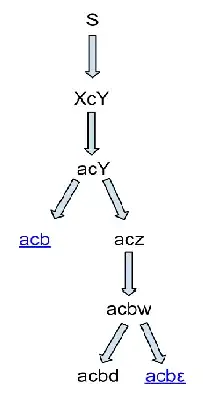I have the following question taken from a compilers course exam:
Show that the following grammar is ambiguous.
S = XcY
X = a
Y = b | Z
Z = bW
W = d | ϵ
I drew the following tree:

Am I correct in thinking it is ambiguous because acY can end up at acb (one of which is followed by an epslion) following different paths?